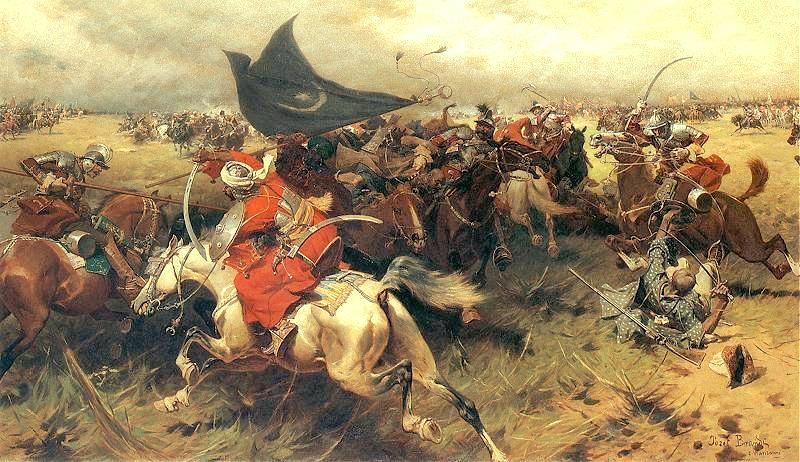
The Middle East: Seljuk Empire

Figure 1.--The Battle of Manzikert was fought by the Byzantine and Seljuk forces. The Seljuks forces were led Sultan Alp Arslan who defeated the Byzantine Empire and captured Emperor Romanus IV Diogenes. The Sultan allowed Turkish allies to sack Christian cities and villages in Armenia and Asia Minor (1860s). They destroyed the Armenian capital at Ani (1864). Emperpor Romanus IV personally led a military expedition against them (1068). His slow-moving infantry and heavy calvalty were matched against lighter, faster nobing Seljuk cavalr. The Byzantines captured the city of Hierapolis. Empperor Romanus led a second expedition towards Manzikert, a city in the province of Mu?, in whay is noe eastern Turkey and called Malazgirt. A Byzantine fortress was located there, but had been captured by the Seljuks. Emperor Romnus wanted to negotiate. He offered to return Hierapolis if Arslan would end the siege of Edessa. Romanus threatened war and Arslan onliged.
|
|
The Seljuk were an Islamicized Turkish people who constructed a vast military state that filled the power vzcume left by the decline of the Caliphate duting the medievel era. The Seljuks began as one of countless tribes practicing animistic religions on the vast Eurasian Steppe. They were an unexceptional Turkish people from the Qynyq branch of Oghuz Turks. Seljuk culture as we now know it dates to about 950. At this time the leader, Seljuk, broke from the Oghuz and settled south of the Aral Sea in what is now modern Turkmenistan brining the Seljuks in contact with Persia. They had already come in contact with Islamicized cities and Seljuk converted himself and his tribe to Islam. His heirs conyinue to expand and evolved into a kingdom and eventually a mighty empire. The Sekjuk Empire came to encompass some 1 million square miles extending from the Aral Sea to the Mediterranean across what is modern Turkey, the Middle East, and large areas of Western Asia. The Seljuk Empire was a major power for two centuries (1037-1194). This was at a crucial time in history. Western Crusaders marched east. Eastern armies marched west. The Caliphate was no longer a military power. The Seljuks thus became the first important Islamic powers to resist the Crusaders. They would also face have to face the Mongols. The power center became Anatolia, but the Seljuks enter the Middle East through Persia. As a result they were heavily influenced by the rich Persian culture. They rapidly became a Persiante society. They adopted the Persian culture and used the Persian language as the official language of state. They played an critical part in the the development of the Turko-Persian tradition which was essentially Persian culture patronized by Turkic rulers. And their military victory over the Byzantines opened the way for the Turkanization of Anatolia.
CIH

Navigate the Children in History Website:
[Return to the Middle Eastern chronologies]
[Return to the Main Islamic page]
[About Us]
[Introduction]
[Biographies]
[Chronology]
[Climatology]
[Clothing]
[Disease and Health]
[Economics]
[Freedom]
[Geography]
[History]
[Human Nature]
[Ideology]
[Law]
[Nationalism]
[Presidents]
[Religion]
[Royalty]
[Science]
[Social Class]
[Bibliographies]
[Contributions]
[FAQs]
[Glossaries]
[Images]
[Links]
[Registration]
[Tools]
[Children in History Home]
Created: 1:49 AM 7/13/2017
Last updated: 1:49 AM 7/13/2017



